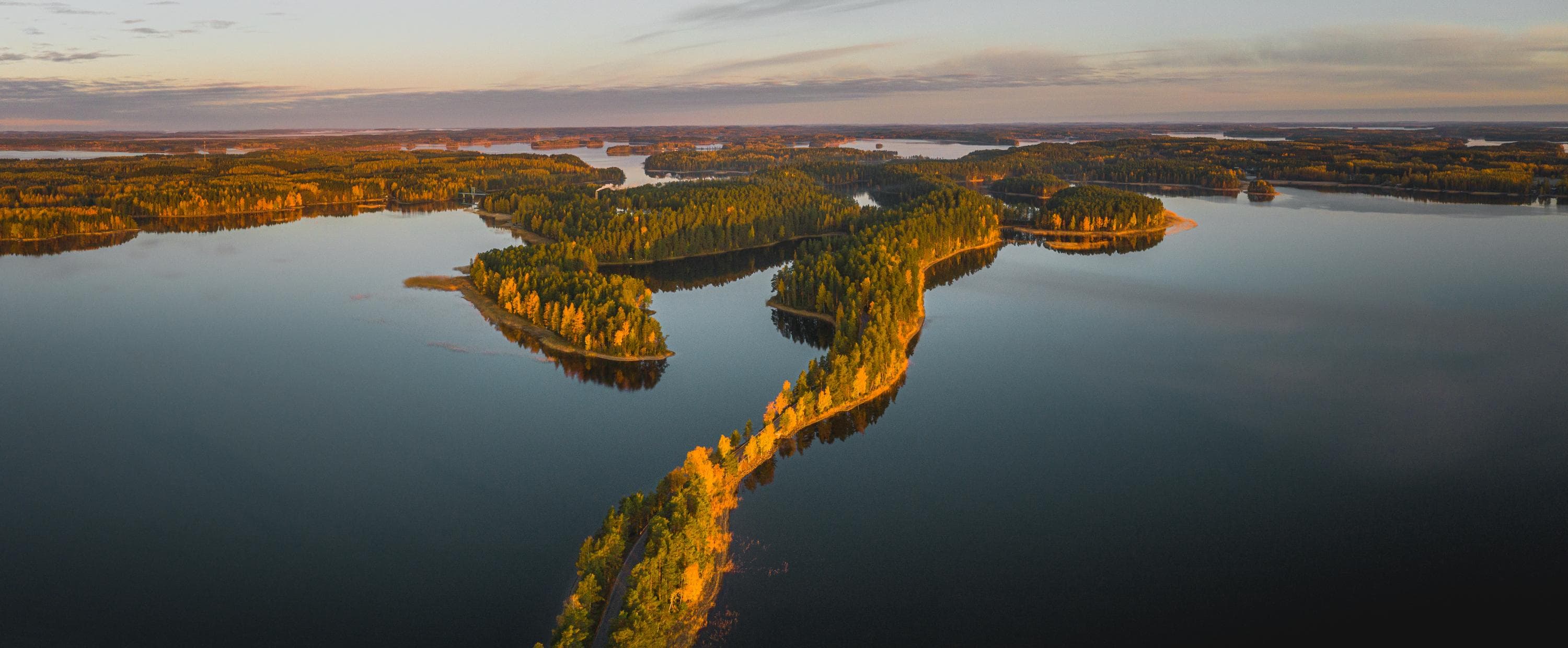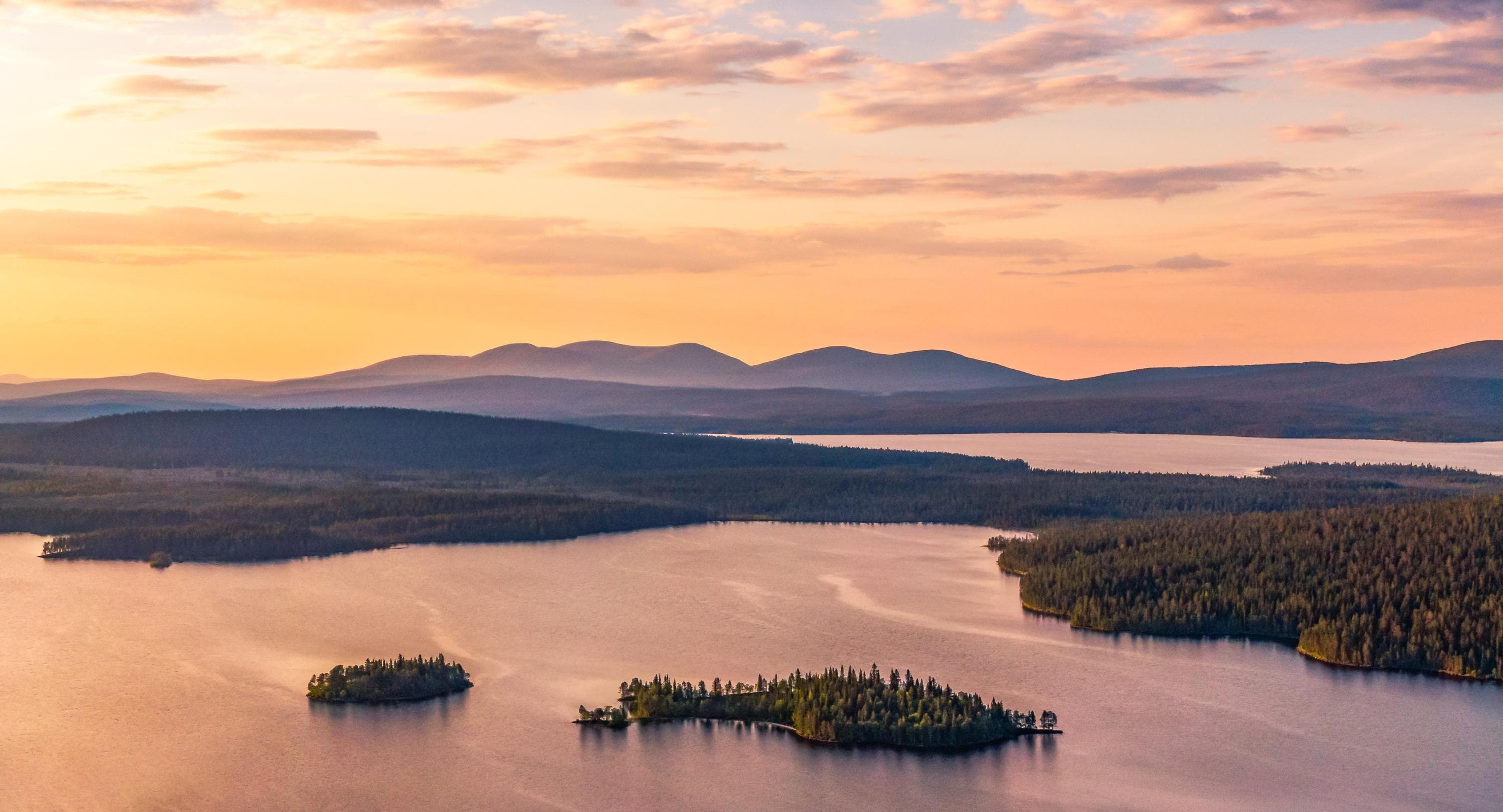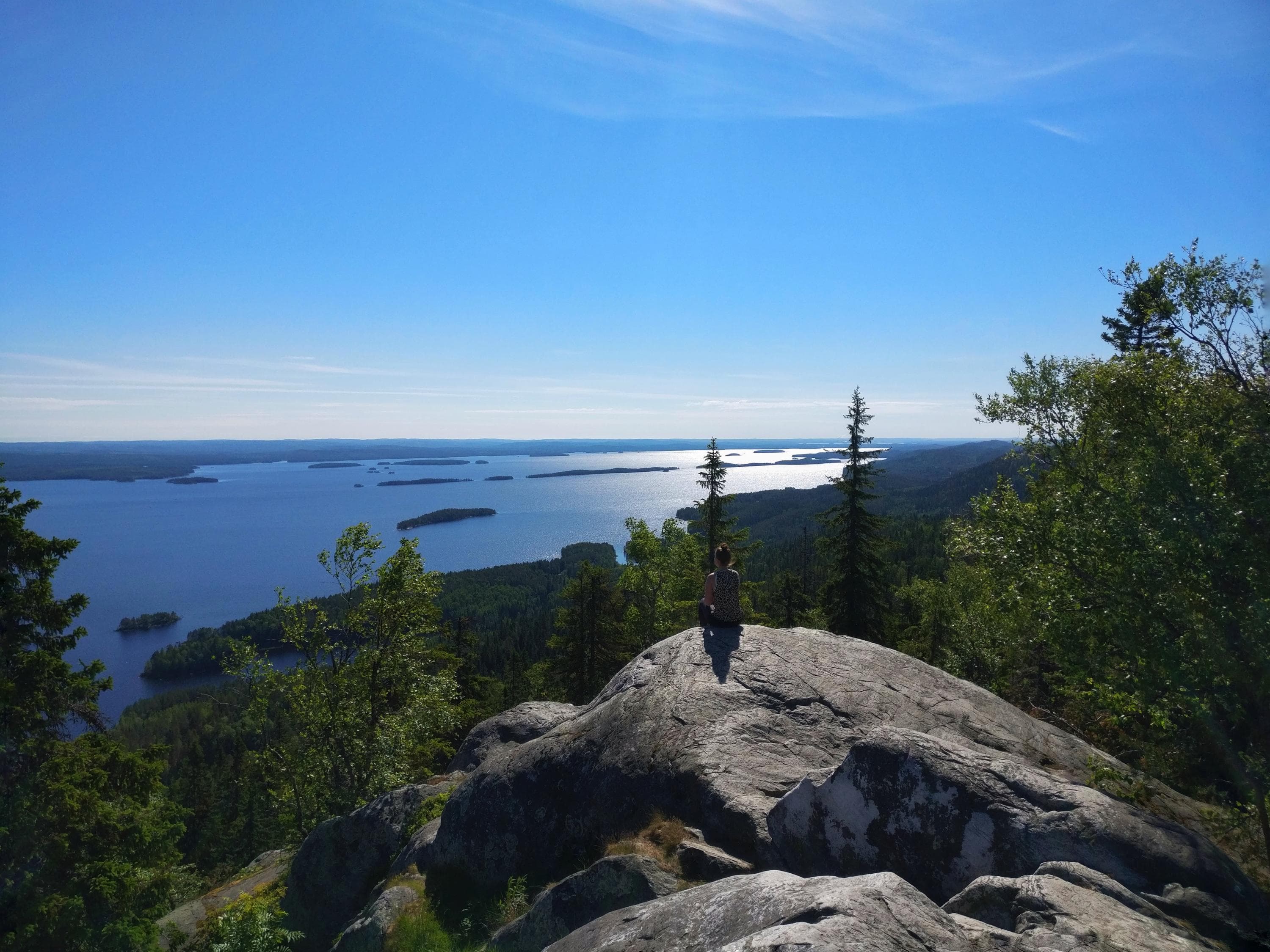How did a beautiful view become a national landscape?
In 1992, 27 national landscapes from around Finland were designated in honour of the 75th anniversary of Finland’s independence. The selection emphasized visual impact, cultural-historical significance, and long-standing familiarity. These 27 landscapes are not only beautiful – they tell the story of how Finnish identity has been shaped. National meanings aren’t created overnight.
The idea of national landscapes stems from the politically tense atmosphere of the late 19th and early 20th centuries, when nature began to be portrayed as a symbol of the nation. The relationship with nature was seen to reveal something essential about what it means to be Finnish. National sentiment was created through art.
Certain landscapes became widely recognized through art and literature. Koli, Punkaharju, and Pallas were etched not only onto canvas but also into the national consciousness. National landscapes are also romantic: Jean Sibelius honeymooned at Koli, as did Juhani Aho with his wife, artist Venny Soldan-Brofeldt. Weddings are still held at the top of Koli today.

Landscapes evolve over time – but how do they appear to a hiker?
Today, national landscapes are much more than artistic inspiration. They are popular hiking destinations, nature conservation areas, and sites of cultural-historical significance. They offer opportunities to explore nature and history on foot, by bike, or via water.
At the same time, they raise questions: Are they idealised visions of the past, or an essential part of how we still see our homeland? What does a national landscape look like today – and what does it feel like to you? Can you discover a new angle on a national landscape?

Finland’s 27 national landscapes – find your favourite
Many of these destinations can be reached by hiking, cycling, or paddling. Some are located within urban areas, others in nature conservation zones.

National landscapes with hiking tips and regional features:
- Maritime Helsinki – archipelago, fortresses, and urban history.
- Porvoonjoki River Valley and Old Porvoo – idyllic river views and a historic wooden town.
- Tapiola – Espoo’s renowned garden city with notable architecture.
- Snappertuna – Fagervik – Raseborg Castle ruins and ironworks tradition.
- Industrial heritage of the ironworks in Pojo.
- Cultural landscape of the Aurajoki River Valley in the Turku region.
- Archipelago Sea national landscape – explore it for example in Archipelago National Park.
- Sund’s cultural landscape with Kastelholm Castle in Åland.
- Köyliönjärvi – historical lake landscape in Säkylä.
- Vanajavesi Valley – breathtaking views from the Aulanko Nature Reserve and park forest in Hämeenlinna.
- Cultural landscape of Lake Rautavesi in the Sastamala area.
- Tammerkoski – the heart of Tampere and industrial history.
- Cultural landscape of Hämeenkyrö in Pirkanmaa.
- Imatrankoski – the rapids of the Vuoksi River, admired still today as in the 1800s.
- Olavinlinna Castle and Lake Pihlajavesi – the Pihlajavesi Nature Reserve takes you into lake landscapes.
- Punkaharju – ridge landscape popular with travellers since the 1800s.
- Heinävesi Route – Kolovesi National Park and Kermajärvi Nature Reserve attract paddlers and hikers.
- Väisälänmäki with its observation tower in Lapinlahti.
- Koli – Finland’s most famous artistic landscape seen from Koli National Park’s summit.
- Villages of North Karelia in Joensuu, Kontiolahti and Ilomantsi.
- Kyrönjoki River Valley and cropfields in South Ostrobothnia.
- Kvarken Archipelago – glacially formed landscape visible in the UNESCO World Heritage Site, the Kvarken Archipelago.
- Hailuoto – known for its fishing villages and the land uplift coastline of the Bothnian Bay.
- Oulankajoki – natural and cultural landscapes in Oulanka National Park, where northern nature meets ravine valleys.
- Aavasaksa and Tornionjoki River Valley – Aavasaksa is one of Lapland’s oldest tourist destinations, with views over the Tornionjoki River.
- Pallastunturi – the famous fell landscape of Pallas–Yllästunturi National Park.
- Utsjoki River Valley – fells, river valleys, and Sámi cultural heritage.
A national landscape is shared cultural heritage for all Finns
National landscapes aren’t just ideals of the past – they are living, evolving places that everyone can experience in their own way. Hiking in a national landscape is a way to walk in the footsteps of history and simultaneously become a part of its future.
Take your camera, a packed lunch, and an open mind. What you see may be more than just a beautiful view – it might be a piece of the Finnish soulscape.
